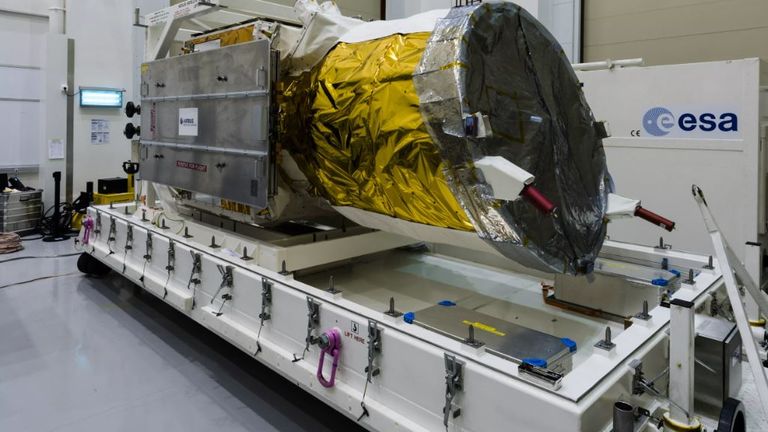Aeolus: Satellite the size of a small car set to plummet to Earth within weeks
The Aeolus satellite has been orbiting the planet at an altitude of 200 miles for five years, but now its fuel is almost spent and gravity, wisps of the Earth's atmosphere and solar activity are dragging it back down.
by Thomas Moore, Sky News Science correspondent,Friday 14 July 2023
 |
| Pic: European Space Agency |
The ESA says its 1.3-tonne Aeolus satellite is running out of fuel and is falling by about 0.6 miles (1km) a day.
Although much of it will burn up in the atmosphere, some debris is expected to reach the planet's surface - most likely at the end of July or early August.
In the first manoeuvre of its kind, the space agency - which the UK is part of - will use up the remaining fuel in an attempt to safely steer the spacecraft towards a remote part of the planet.
Tim Flohrer, head of ESA's Space Debris Office, said: "This assisted re-entry attempt goes above and beyond safety regulations for the mission, which was planned and designed in the late 1990s.
"Once ESA and industrial partners found that it might be possible to further reduce the already minimal risk to life or infrastructure, the wheels were set in motion."
Aeolus has been orbiting the planet at an altitude of 200 miles (320km) for five years, measuring wind in the atmosphere to improve weather forecasts.
But its fuel is almost spent - and gravity and wisps of the Earth's atmosphere, as well as solar activity, are dragging the spacecraft downwards.
Once the satellite reaches an altitude of 174 miles (280km), mission control in Germany will put it through a series of manoeuvres over several days to take it down to an orbit of 93 miles (150km).
One last change in trajectory would then put it on course to plunge into the ocean, far from land.
ESA says in a blog post that it's impossible to give an exact timing for the spacecraft's re-entry.



No comments:
Post a Comment